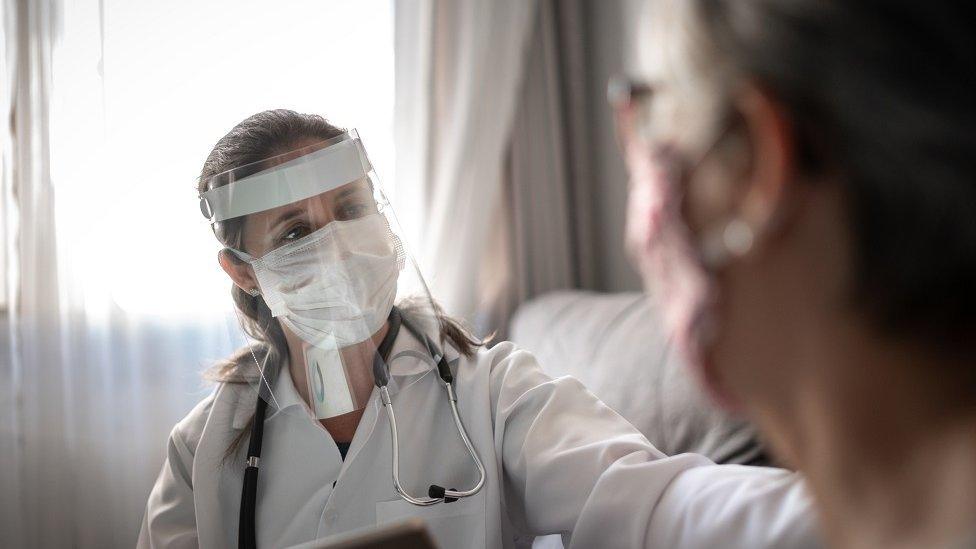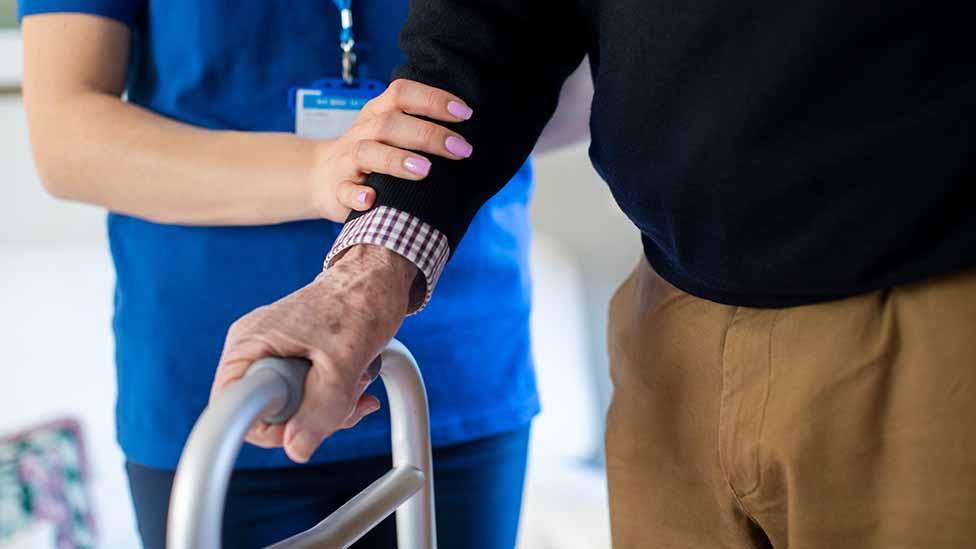Covid: New rules on hospital discharge for care home patients
- Published

Previously people needed a negative swab before being discharged from hospital
Patients who test positive for Covid-19 will be able leave hospital and move back to care homes if judged to be non-infectious, it has been confirmed.
Tests will have to show the so-called "viral load" in their bodies crosses a certain threshold before people are discharged.
Previously people needed a negative swab before being discharged.
Outbreaks in care homes could also be declared over in 20 days instead of 28 under new Welsh Government rules.
The Welsh Government said it was following the latest scientific advice.
Health Minister Vaughan Gething said there was a "balance" to be struck between keeping care homes safe and getting people out of hospital when possible.
Social care businesses and the Older People's Commissioner have been consulted on the changes.
It follows controversy over whether people took the virus with them when they were discharged from hospital in March and April as the NHS prepared for the first wave of infections.
Covid-19 tests produce a Ct value (Cycle Threshold) which indicates how much viral load the patient is carrying.
Scientific evidence from the Welsh Government's Technical Advisory Group (TAG) says a Ct value of 20 "equates to a high viral load", while 35 is lower.
The TAG report says there is "high confidence" that someone with a Ct value of 35 "can be judged to be non-infectious".
Confirming the new guidance, Mr Gething said people with a Ct number of 35 or above may now go home or into social care.
They will still need to have waited 14 days since their last positive test or the onset of symptoms, have been free from fever for three days, and have shown improvement in other symptoms.
A "better understanding" of the disease will also reduce the time care homes have to close to visitors and new residents after outbreaks.
"Our latest advice indicates that we can say with a high degree of confidence that - provided proper infection prevention and control processes have been applied - individuals are very unlikely to still be infectious 20 days after the last case in a closed setting has been identified," Mr Gething said.
- Published14 December 2020

- Published1 December 2020

- Published23 November 2020

- Published17 November 2020
